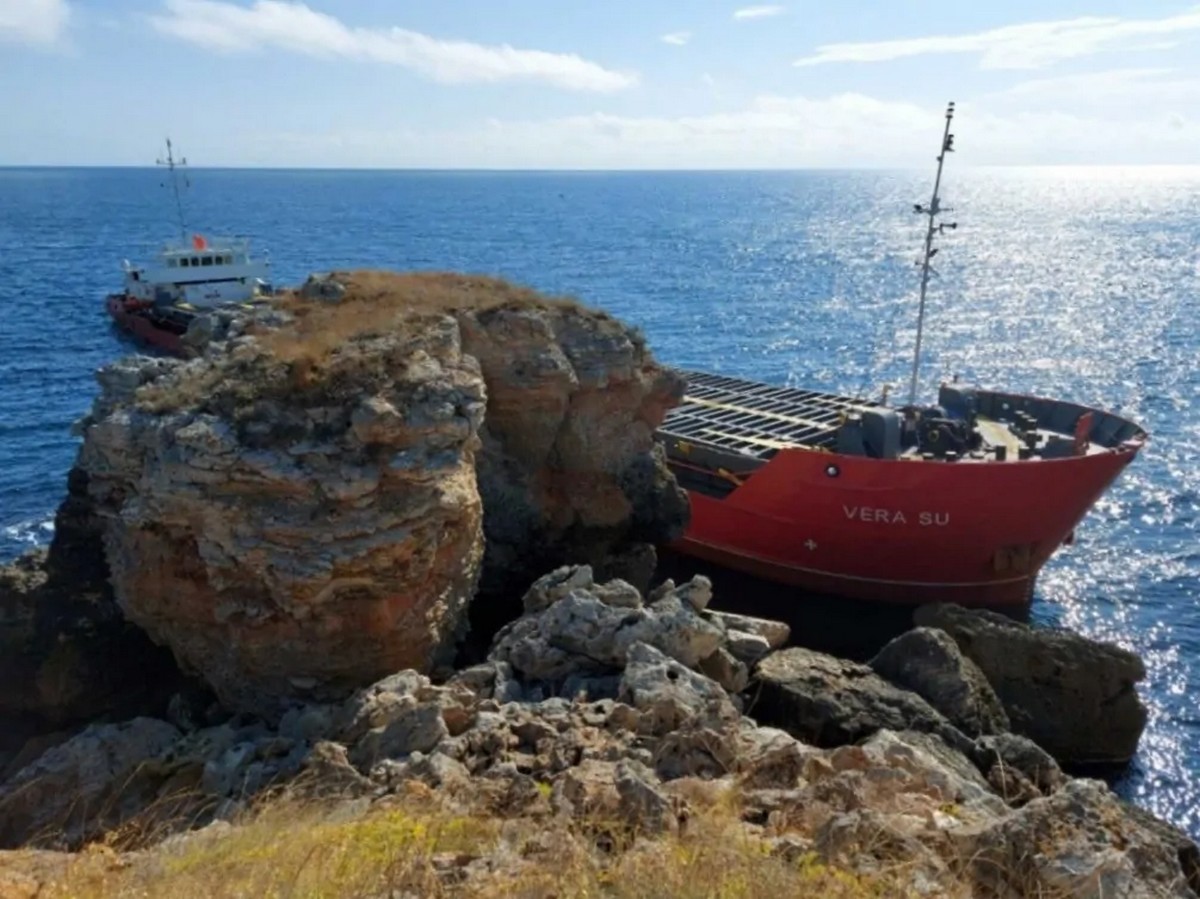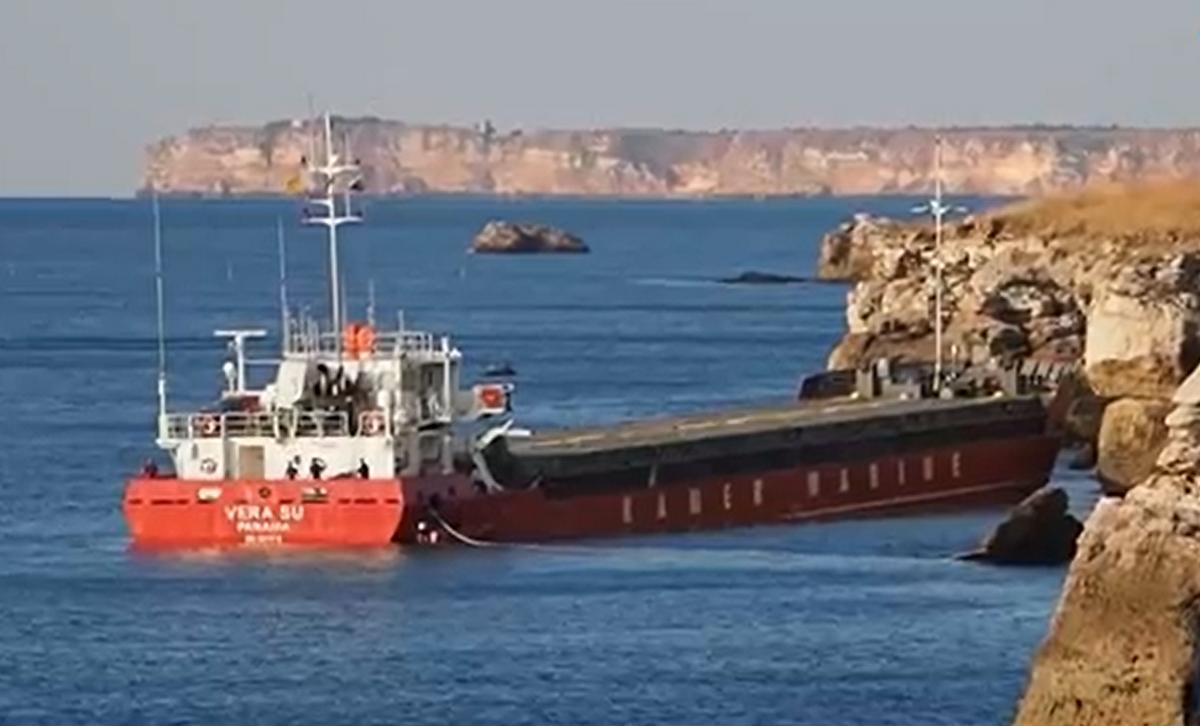A VERA SU dry cargo ship bound for Ukraine from the Bulgarian port of Varna with several thousand tons of nitrogen fertilizers ran aground on September 20 due to a navigation error near the village of Kamen Bryag on the northern coast of Bulgaria. It was reported that as a result of the vessel’s impact on the reef, which occurred at a speed of about 7 knots, its bow was severely damaged, including ballast tanks, which are now completely submerged. None of the crew members were injured in the collision, they are still on board.
The plan of the rescue operation to free the dry cargo Vera SU stuck on the rocks on the northern coast of Bulgaria has not been agreed yet. As reported on Saturday from the scene by a TASS correspondent, the plan to reload the goods – about 3.3 thousand tons of nitrogen fertilizers – with a floating crane to another vessel to facilitate dry cargo and pull it from the rocks to the open water with subsequent towing for repairs, was rejected.

Experts who organized the work concluded that the topography of the bottom and numerous coastal reefs do not allow for a safe operation. The option proposed by the Turkish company – the shipowner, which provides for partial unloading of dry cargo directly into the sea, categorically did not suit the environmental agency, which recalled that the ship crashed near the reserve. As a result, for the fifth day, despite the appropriate weather for the work, effective action to save the ship is not carried out.
“The situation is deteriorating, meteorologists predict worsening weather – strong winds and unrest in the coming days. This increases the probability of the destruction of the vessel, which is firmly planted on the rocks,” said diver researcher, participant in numerous rescue operations Mikhail Zaimov. He stressed the need for prompt action, including the use of small vessels to overload vessels that can safely approach the wreck, as well as the use of large airbags that can help remove dry cargo from rocks.
“Emergency rescue operations must be carried out as soon as possible, otherwise a significant part of nitrogen fertilizers will get into the water, and next spring due to the rapid development of algae may change the entire ecological system of the area,” said the expert.
On Saturday, an independent visual inspection of the hull of the dry cargo vessel was conducted by Bulgarian diver Znaydeno Nedev. In an interview with BTV, he said that in the bow of the vessel there is a leak of fertilizer through holes in the hull, due to which the water in the area of the holes is muddy and can not be inspected. Water samples taken in the area of leakage will be sent for analysis to a specialized laboratory.

